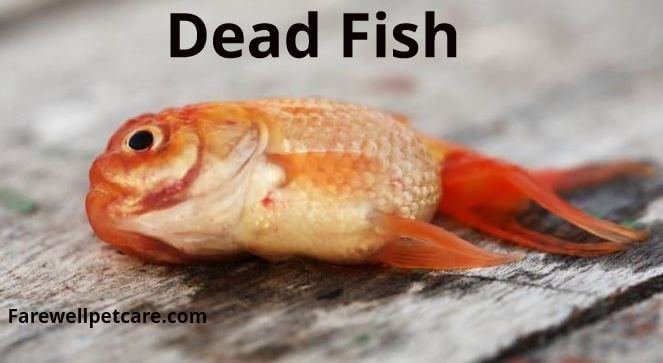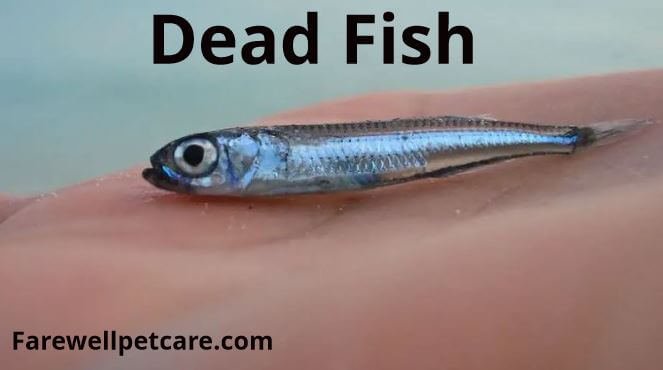Finding one of your cherished fish dead in the tank can be heartbreaking and mortifying. But what should you do next? Should you proceed to dispose of the body or leave it and allow nature to run its course? In such a situation, one pertinent question that will bother you is, “If a fish dies should I change the water?”
You should change the aquarium water if a fish dies. Decomposition begins immediately after death, causing a release of toxins into the water. A partial water change should be completed to lower any potential health hazards to other fish.
If you’re trying to figure out what to do after one of your fish dies in a tank, this post is for you. I’ll provide you with the steps to ensure your tank water quality parameters stay within the limits for the safety of other fish. Keep reading!
If a Fish Dies Should I Change the Water? 5 Crucial Things to Do
If you realize that one of your fish is dead in the aquarium, the first step is to safeguard the well-being of the other fish.
Remember, at this point, you don’t know the cause of the death. Therefore, you must act swiftly to prevent the remaining fish from dying if the dead fish died from a contagious infection.
That said, here are the essential things to do if a fish dies in the aquarium:
1. Remove the Dead Fish From the Aquarium

Once you find a dead fish, the first thing to do should be to take it out of the tank immediately and as carefully as possible.
A fish starts decaying right after it dies, releasing harmful chemicals that may cause a foul smell, endangering the lives of other fish in the aquarium.
Moreover, the other inhabitants may consume the dead fish if you leave it in the tank longer. This can jeopardize their health, especially if the fish died from a disease.
You can remove the remains using a fish net or a siphon tube. Ensure to have protective gloves when handling the fish and dispose it of appropriately.
You can seal the carcass in a plastic bag and bin it, although it will produce an awful smell. Therefore, burying or Incinerating via bonfire will be safer.
If you handle the fish with naked hands, clean them thoroughly to avoid possible transmission of harmful bacteria and parasites to your body.
Also, remember to clean the fish net or siphon tube after use to avoid future contamination of the aquarium water.
Find Out: How to Save Dying Fish After Water Change: 5 Simple Ways
2. Test the Water for Ammonia
A dead fish produces ammonia as a by-product of decomposition.
A high concentration of ammonia in an aquarium is detrimental to fish. It damages the gills and internal organs, causing stress, lethargy, and even death.
Your tank size will determine the rate at which water gets contaminated if you leave the fish to decay.
A smaller tank means ammonia will build up quickly since there is little water for dispersion. You’ll, therefore, need to change a more significant portion of the water to remove excess ammonia. The reverse is also true.
For instance, a 5-gallon (18.93-liter) tank will take only a few hours to get polluted, while a 30-gallon (113.56-liter) tank can take up to a day. Therefore, you’d want to eliminate the fish from the tank within 24 hours to avoid ammonia build-up.
After removing the fish, check the ammonia level in the water. You can use aquarium test strips, although hobbyists regard them as inaccurate because they use an extensive scale.
Of the three types of water testing equipment, scientific meters are the most accurate but very expensive, while test trips are the least accurate but cheap.
On the other hand, liquid test kits are pocket-friendly and will provide accurate readings of how contaminated the water is and if it is risky for the remaining fish. You’ll be able to know whether to change the water and how much. So, consider using them.
The test readings of a safe aquarium environment should be as follows in parts per million (ppm). If the readings of these parameters are off, proceed to the next step.
- Ammonia: 0 ppm.
- Nitrite: 0 ppm
- Nitrate: At most 10 to 20 ppm
Also Read: Koi Fish Swimming Upside Down: 4 Causes and Treatments
3. Change At Least a Quarter of the Water
Replacing a part of the aquarium water is the most efficient way to reduce ammonia contamination.
Although it’s not necessary to clean the entire tank, you should remove contaminants that could have escaped into the water.
The test kit results will help you determine how much water you need to change. You’ll only need to add a bacteria starter if the ammonia level is below 0.2 mg/l (ppm). But a partial water change will be necessary if it exceeds this amount.
Ammonia levels between 0.5-1.0 mg/l (ppm) will require you to change at least a quarter (25%) of the water volume and a half (50%) for ammonia levels above 1.0 mg/l (ppm).
Replacing the water in intervals is recommended if you need to change more than 20% of it. This is because replacing significant amounts of water at once will cause temperature fluctuation, which can shock the fish and even cause death.
Consider gradually replacing the water in 10% portions at one-hour intervals. This will give the fish enough time to adapt to the changing conditions without stress. If you need to change more than a third of the water volume, then do it in 20% increments or more than that if the ammonia levels are beyond 2.0 mg/l (ppm).
However, brace yourself to observe some stressed fish.
To perform a water change, you’ll need the following things:
- A siphon
- De-chlorinator
- Freshwater
- A bucket
Here’s a YouTube video demonstrating a partial water change in an aquarium.
4. Add Beneficial Bacteria Starter in the Tank

In a healthy and balanced aquarium system, there are beneficial bacteria that convert the harmful ammonia and nitrites into nitrates and other harmless substances.
These bacteria establish themselves on the aquarium’s filter media, gravel, rocks, plants, decorations, and other solid surfaces. They keep the water clear and inhibit the accumulation of toxic ammonia and nitrites.
The ammonia and nitrites are produced from decaying matter, such as:
- Fish waste
- Food leftovers
- Dead plants and other organic materials
In the event of ammonia spiking in the tank, such as a fish dying, it’s recommended to boost the beneficial bacteria after completing a water change. Boosting helps the bacteria establish their population faster, hence, taking care of the pollution.
You can achieve this by adding a beneficial bacteria starter to your tank. However, you need to beware of brands that don’t use the correct set of bacteria, rendering some products useless.
To save you time and effort, here are some effective bacteria starters that most fish keepers prefer:
- API Quick Start
- Tetra EasyBalance Plus
- Aqueon Aquarium Pure Live Bacteria
5. Determine the Cause of Death
Last, but not least, it’s vital to investigate the cause of your fish’s death to prevent similar occurrences. To do this, check the water conditions, such as PH and temperature, and observe the behavior of the remaining fish. Do they look stressed?
Additionally, inspect the body of the dead fish for any physical injuries such as rigged fins and bite marks or health-related issues such as unusual bloating and discoloration patches.
Common causes of aquarium fish deaths include the following:
- Poor water conditions, e.g., PH imbalance, limited oxygen, presence of chlorine, ammonia concentration, etc.
- Life-threatening fish diseases
- Thermal shock due to a sudden change in water temperature
- Injuries from aggressive tank mates or sharp objects
- Overfeeding
- Old age
Once you’ve discovered the cause of death, you can take the necessary measures to better your aquarium conditions and prevent future happenings of similar situations. The steps may include:
- Adjusting the water chemistry
- Carrying out preventive maintenance checks
- Adopting compatible tank mates
How Do You Clean Water After a Fish Dies?
After a fish dies, the first step of cleaning the water is partially changing it to reduce ammonia pollution.
You’ll want to ensure no fish remains leeched into the water by siphoning out dirt and other foreign materials during water change. You’ll also want to clean your filter to remove blockages and build-up.
Then, you’ll add a beneficial bacteria starter to help clean out the remaining ammonia pollution. You should also consider adding a few live plants to increase oxygen circulation and reduce nitrate levels. But do not overcrowd them.
Check Out: Can Guppies Breed With Mollies to Produce a Hybrid? 4 Best Ways to Breed Them
How Quickly Do Fish Die After Water Change?
Fish will undergo tremendous stress when you perform a drastic water change. Some may die immediately due to shock, while others may fall ill and succumb to the illness in about a week.
This is why changing the water gradually in small portions and at intervals is vital to give the fish enough time to adjust to the changing environment.
Final Thoughts
The question, “If a fish dies, should I change the water?” is more than just a query. It’s an essential lesson in responsible fishkeeping that will save the lives of your aquatic companions.
It’s recommended to change the water if a fish dies in the aquarium. This maintains the water quality for the well-being of your remaining fish.
Finally, remember to change the water gradually to avoid subjecting your fish to stress. A rule of thumb is to conduct a 25% water change every two to three weeks.

